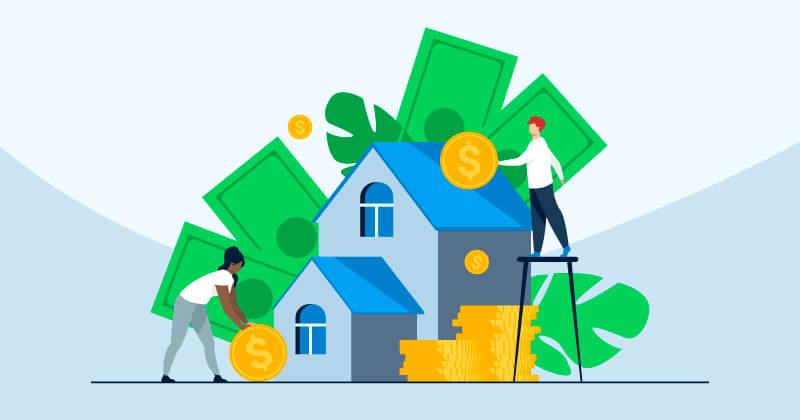

Want to own real estate, precious artwork, and other valuable assets traditionally available only to wealthy investors?
Real world assets (RWAs) can help make this possible.
In this guide, we’ll break down everything you need to know about real world assets — including how they work and how you can get started trading them.
What are real world assets (RWAs)?

Real world assets are physical or financial assets that are represented digitally on the blockchain.
Traditionally, assets like real estate and rare artwork require substantial investments. In addition, these types of assets typically have low liquidity — which means that finding buyers can be a long and difficult process.
Real world assets can potentially fix both of these problems.
Real world assets make it easy to buy, sell, and trade small fractions of assets like real estate, valuable artwork, music licenses, and precious metals! This in turn, leads to more liquidity and increased access for retail investors.

Benefits of Real World Assets
Let’s walk through some of the benefits of real world assets.
- Liquidity: RWAs bring liquidity to otherwise illiquid assets. While it may be difficult to sell a physical piece of artwork, it may be easy to sell a token that represents a fraction of the artwork’s ownership!
- Accessibility: RWAs make high-value assets more accessible to investors — who can pay for a fractional piece of ownership.
- Efficiency: Using the blockchain to trade real world assets can lead to lower transaction fees and faster settlement times — as well as enhanced transparency and security.
- Portfolio Diversification: RWAs allows crypto investors to diversify their portfolios — which can potentially offset some of the volatility of the digital asset market!
Examples of Real World Assets
Let’s walk through some examples of real world assets.
- Stablecoin: Stablecoins — like USDC and USDT — are the most common type of real world assets. Stablecoins are tokenized representations of fiat currencies like the US dollar.
- Real Estate: Tokenized real estate gives token holders fractional ownership of a property and in some cases, a proportion of rental income.
- Commodities: Gold, silver, and other precious metals can be tokenized — making them easy to trade for cryptocurrencies!
- Art: While high-value art pieces have traditionally been bought and sold by the wealthy, real-world assets can enable fractional ownership for the everyday investor. In a world of generated art from various AI tools, blockchains can help verify the authenticity of artwork.
- Intellectual property: Real-world assets can be used to give ownership over intellectual property — like music licenses, patents, and eBook rights. For example, platforms like Anote Music allow investors to own music rights — and get cash flows from future royalties!
- Vehicles: Tokenization can be used to easily transfer ownership of a vehicle from one party to another. Tokenization can also make it easy to own a fraction of a luxury vehicle like a sports car or yacht!
- Ticketing: NFT tickets allow customers to sell their tickets on secondary markets. For example, TravelX allows ticket holders to sell their tickets if travel plans change — which means customers no longer have to deal with the refund process.
- Loans: Real world assets can be used as collateral for decentralized loans! This can potentially lead to increased access to capital.
How Real World Asset tokenization works
Real world assets use the blockchain to prove ownership of tokens and verify the security of transactions.

Each ‘token’ represents a fractionalized piece of ownership in the real world asset. These tokens can be bought, sold, and traded freely.
Best Protocols for Real World Assets
Let’s walk through a few popular protocols that support real world assets.
- Ondo Finance: Ondo Finance allows users to invest in tokenized government treasuries.
- Centrifuge: Centrifuge allows users to invest in tokenized real estate and government treasury funds.
- Goldfinch: Goldfinch focuses on loans in emerging markets — with real world assets as collateral!
- Maple Finance: Maple Finance is an on-chain marketplace for institutional borrowers.
Remember, the real world asset space is relatively new. Exercise caution, and do your own research before choosing a real world asset platform.
What are some of the controversies around real world assets?
Demand for real world assets picked up in 2023, in the midst of a crypto bear market. Some critics claimed that the hype around RWAs was simply due to a lack of exciting developments in crypto at the time.
During the same year, critics also questioned the loan underwriting process of popular RWA platforms. In 2023, an African motorcycle taxi startup defaulted on a $5 million loan on Goldfinch.
What are the roadblocks to using real world assets in DeFi?
At this time, real world assets have not seen wide adoption. It’s likely that this is due to the following issues:
- Regulatory Challenges: At this time, it’s not clear how the SEC will regulate real-world assets on chain. It’s likely that an answer will not come for years.
- Adoption: While real world assets hypothetically can increase liquidity, it’s likely that it will take years for both asset-owners and interested investors to adopt the technology.
- Infrastructure: Real world assets require infrastructure in place to ensure that ownership of the token corresponds with ownership of the real-life asset.
In conclusion
Real world assets have the potential to democratize the economy. While protocols like Goldfinch have brought RWAs to the masses, there are still many challenges preventing widespread adoption.
Frequently asked questions
How we reviewed this article
All CoinLedger articles go through a rigorous review process before publication. Learn more about the CoinLedger Editorial Process.

CoinLedger has strict sourcing guidelines for our content. Our content is based on direct interviews with tax experts, guidance from tax agencies, and articles from reputable news outlets.






























%20(1).png)





.png)
















